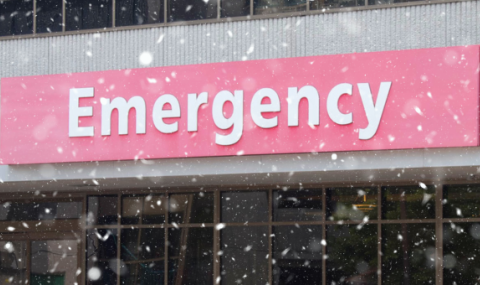Here are some issues with the heart and circulation that are seen in intensive care:
| Cardiac arrest | Atherosclerosis |
| Heart attack | Aneurysms |
| Arrhythmias |
|
| Cardiac arrest | A person is in cardiac arrest when their heart has stopped beating for any length of time. In the hospital, this is called a Code Blue. Everyone in the MSICU is hooked up to a heart monitor, or ECG machine. The heart monitor sounds an alarm if there is no heart beat, or it is beating irregularly. A team of health care providers come quickly and begin chest compressions (CPR) if the heart is not beating. They look at the pattern of the heart’s electrical signals on the monitor and use this information to decide what to do next. Different medications will be given depending on what the source of the problem is. They may try to shock the heart back into a normal rhythm by running electricity across it with a defibrillator. The shock causes the heart to stop completely, and gives it a chance to restart at a normal rhythm. |
| Heart attack | Also called a myocardial infarction (MI), a heart attack happens when the blood supply to part of the heart muscle gets cut off. If part of the heart muscle is without oxygen carried by the blood that part of the heart muscle can die. The heart may continue to beat, but may not work as effectively. |
| Arrhythmias | An arrhythmia is an abnormal electrical rhythm in the heart. If the electrical signal does not travel along the regular route, the heart does not beat as effectively. Most healthy people have occasional arrhythmias. When they happen too often, they can cause problems with the output from the heart. Arrhythmias are treated with medications, a pacemaker or other treatments. |
| Atherosclerosis | If the blood vessels of the body are diseased, they can become hard and less flexible over time. Deposits of fat form and harden onto the walls of the arteries. A clot can form over the fatty deposit. If the clot breaks off, it can travel through the body and become lodged in a narrower vessel. If a clot goes to the brain, it can cause a stroke. A clot can block an artery to the heart muscle, causing a heart attack. Atherosclerosis is a very common health problem in Canada. |
| Aneurysms | Aneurysms are arteries with weak walls. Arteries carry blood at high pressure. Aneurysms are most common in the brain or in the aorta, the largest artery in the body. They can come in many shapes, but are often found at the point when one artery branches off into two |
|
|
Deep vein thrombosis is a complication of immobility. DVTs form in the veins of the legs or groin. If a person is up and moving around normally, the action of the muscles in the legs helps to keep blood moving back towards the heart. When a person is too sick to move, the blood can pool and form clots that may break off. DVTs are a major cause of pulmonary embolisms. Patients are often given a low dose of blood thinners to help keep the blood from clotting. The team may also use compression stockings or Sequential Compression Devices that help squeeze the blood back towards the heart and help prevent clots.
|



